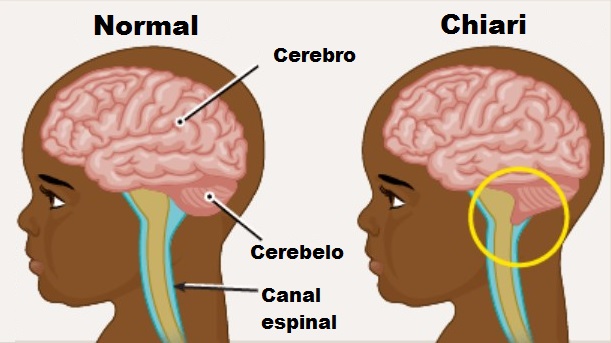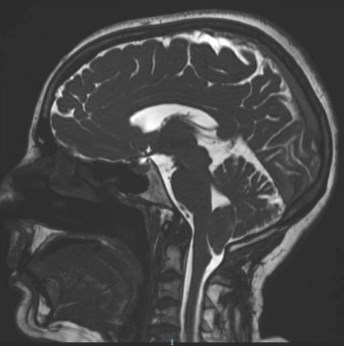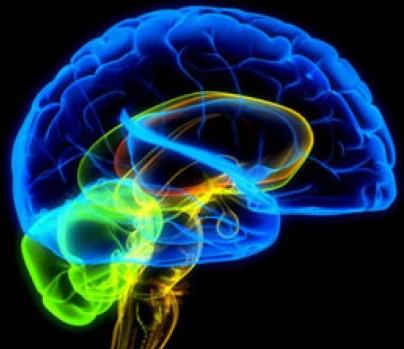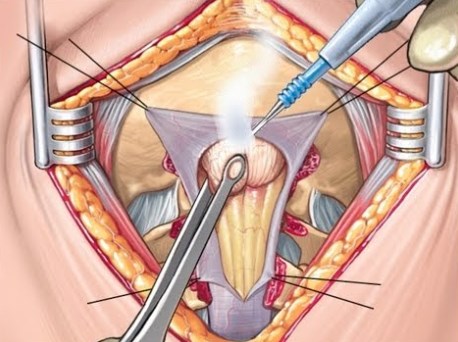The malformationóChiari n is a structural defect in the cerebellum. That's the part of the brain that controls balance.
En una situationón normal, the cerebellum and part of the brainstem sit in a space above the foramen magnum. When the malformation occursón, the cerebellum is located below the foramen magnum increasing the pressureón on the nerves and tissues in the area.

Los cientíPhysicians thought that Chiari malformations occurredíand a 1 decade 1,000 births, but the new tédiagnostic techniquesóstico for imágenes, how tomographsíthe computerized ones (TC) and the imágenes by magnetic resonanceética (IRM), suggest that the conditionón is not muchás común.
Precise estimates are diffíhard to do, because some neitherños are born with the disease and never develop sísymptoms or develop the sísymptoms in adolescence or adulthood. Equally, Chiari malformations have been shown to affect women with más often than men.
There are four typesías del SíArnold Chiari ndrome. They are rare diseases, but the first one (type I) is the Más común and less serious than the rest.
Other diseases that are associated with this malformationón sound: hydrocephalus, spine bítrust, syringomyelia and the síndrome of médula anchored. It is common to observe it in adolescents or adults.
Index
¿CóHow are Chiari malformations classified??
At the end of the 19th century, Patólogo and alsoéProfessor Hans Chiari, I discoveredó anomalousíace of the brain, between the unitedón of the cráneo and the spine. These were classified in order of severity, like type I, II, III and IV, Nevertheless, the malformedón of type I is the most commonún.
Deformón de Chiari. Type I.
It is the one that occurs during fetal development. It is characterized by the downward displacement of the amícerebellar glands into the cervical spinal canal, for about, four thousandíWhat are the types of dwarfism. Due to this displacement, circulation is blocked.ón normalíquido cefalorraquídeo (LCR) between the spinal canal and the intracranial space.
Anomalousías present in the malformationón de Chiari

Type I.
In the malformationón de Chiari type I, are observed abnormalíace at the base of the cráneo and the spine between 30 and 50 percent of patients. Éthese include:
- Includedón at the base of the cráneo and consequently compressionón resulting from the brainstemálol.
- Unión óbe of the vértebra C1 at the base of the cráneo
- Hugópartial n of the véC1 and C2 vertebrae of the vertebral column
- Unión congérivetsón inside the neck with possible malformationón associated with the upper levels of the cervical spine (Klippel-Feil deformity)
- Thorn bícervical occult fida
- Presence of scoliosis, especially in niños with immature spines
Type II
In the malformationón de Chiari type II, a downward displacement of the m is observedédrama, the cerebellum and the fourth ventríass in cervical spinal canal. Usually occurs in patients with myelomeningocele (hobbyón congéhatched during fetal development, where the méspinal cord and spine do not close properly).
Type III
In the malformationón de Chiari type III, dysraphism is appreciated in a portionón of the cerebellum and/or brainstemálol. Nevertheless, this malformationóIt's not very rare. There is a high rate of early mortality in infants who suffer from it and those who manage to survive present déficits neurolósevere pain.
Quir closure is attemptedúearly argic defect as treatment. The malformationócan not come withñada for severe birth defects, which may require extensive treatment. But, as we mentioned before, the babiesés can have life-threatening complications.
Type IV
The malformationón of Chiari type IV is the m formás serious y la más rare. Occurs when the cerebellum does not develop normally. The babieséyes with this malformationón, difícan easily outgrow childhood.
Sísymptoms of malformationón de Chiari

Type I.
In some cases it does not present síntomas. Many of the síntomas isán related to trainingón of a syrinx. Nevertheless, When these manifest, they can occur alone or in combination.óno of the following:
- Headache originating at the base of the cráneo, made worse by sneezing or coughing
- Dizziness and balance problems
- Muscle weakness in arms and hands. In other cases there is tensionón muscular
- Sue's apneañO
- Visual problems, What: hypersensitivity to light, everyoneódouble or blurred n
Type II
The síntomas isán related to myelomeningocele or hydrocephalus, such as:
- Períodos of apnea or alterationóin the normal rhythm of breathingón
- Sickness
- weakness and péloss of strength in arms
- Involuntary eye movements
Type III
The sísymptoms appear in childhood and are accompaniedñof life-threatening complications. The same s are presentedísymptoms of malformationótype II, but with neuronal defectsósuch as mental retardation and seizures.
Type IV
- Scoliosis
- Péloss of sensation, including heat and fríO
- Severe general pain, especially in the head
- Péloss of bowel and bladder control
- Great muscle weakness and spasticity
 Diagnosis to detect Chiari
Diagnosis to detect Chiari
To diagnose the malformationón Chiari there are several tests that can determine, even what kind is it. Let's see what they are:
magnetic resonance imagingética (IRM). It is the first diagnostic testóstico because it produces imáthree dimensional genes. Provides an accurate view of the cerebellum, the méspinal cord and brain, With this test you can define the scope of the malformations and even distinguish the progression.ón.
Scanneríto computerized (TC o TAC). This test uses x-rays to create an image. With it you can define the sizeñor of the ventríbrain ass and show a lock, if there was. Abnormalities can be evaluatedías óseas at the base of the brain and cervical canal.
Miograma. The process consists of injecting a contrast material, to take an x-rayíto the spinal canal. The purpose is to show the pressureón that exerts a malformationón on the méspinal cord or nerves. It is a rare test.
Anádream lysisñO. The patient is made to sleep in a roomón especial, where breathing activity can be controlled, oxygenation levelsón and possible seizures to evidence sleep apneañO.
swallow testón. Through X-rays, the passage of food through the pharynx is observed to determine any abnormality.íto suggest a dysfunctionón lower brain stem.
 Causes of the malformationón de Chiari
Causes of the malformationón de Chiari
The malformationón Chiari has a variety of different causes. in the majoría of the cases cong cause has been determinedénita. During fetal development, structural defects are detected in the brain and méspinal game. mayíto be caused by gene mutationsétics or by an inadequate diet with déficit de vitamins y nutrients durante el embarazo.
Treatments for Chiari malformations
The treatment of the malformationóChiari n depends on the exact type of malformationón, así like progressón y sísymptoms presented.
Treatments are not followed for the malformationóasymptoteática (usually type I). Yes, malform usón es sintomática, treatment can be followed as long as it is determined that there are no complications with hydrocephalus.

surgical treatmentúrgic depends on the degree of inclusiveón or other abnormalías. The malformationón of Chiari I can be treated quirúrigidly with decompressionólocal n of the overlapping bones and releaseón of the dura. In some patients it will be requiredá hugón espinal cervical.
The decompressionóNo of the malformationón of Chiari II is treated similarly, but it is limited to decompressing the tissues of the spinal canal. This decompressionón is carried out under general anesthesia.
This surgeryía has the objective of effectively decompressing nervous tissue and rebuilding the normal flow of líquido cefalorraquíaround and behindás of the cerebellum.
the surgeryía is not guaranteedíto from ésuccess in each individual. Go thereñto the nerves caused by the malformationón cannot be reversed. Some patients need máI know of a surgeryía and in some cases the relief of the s is not achieved.íntomas.
